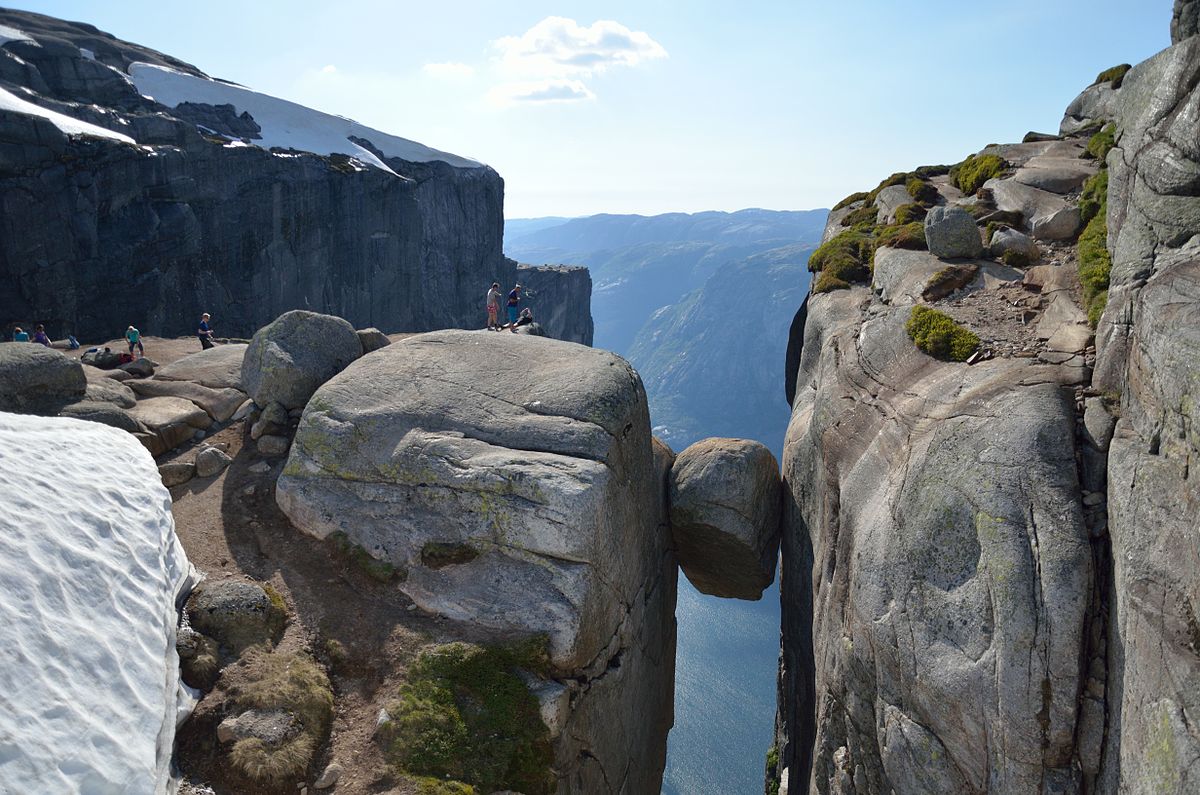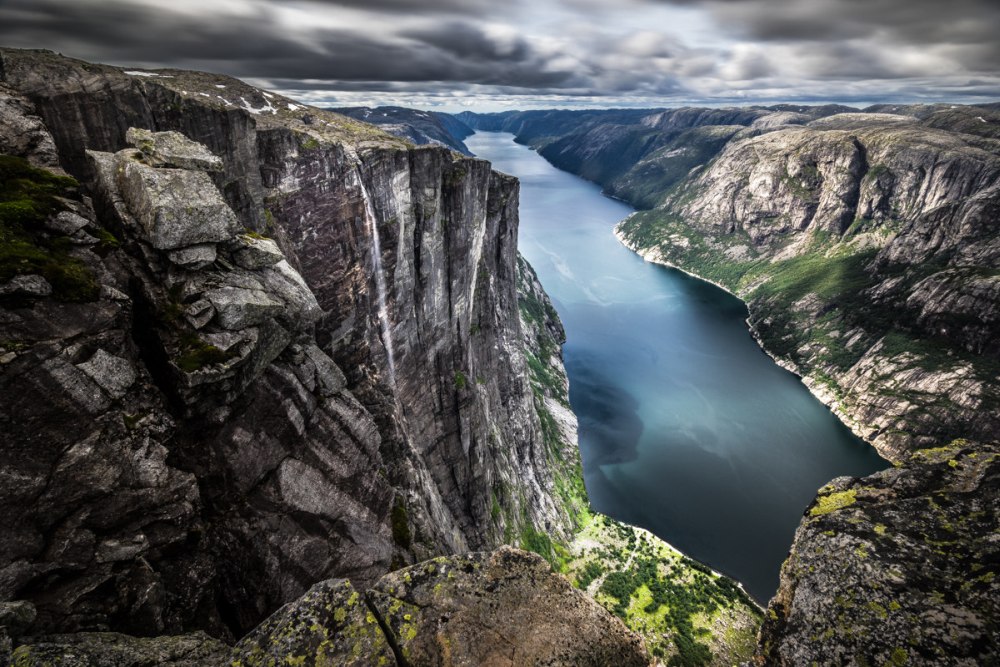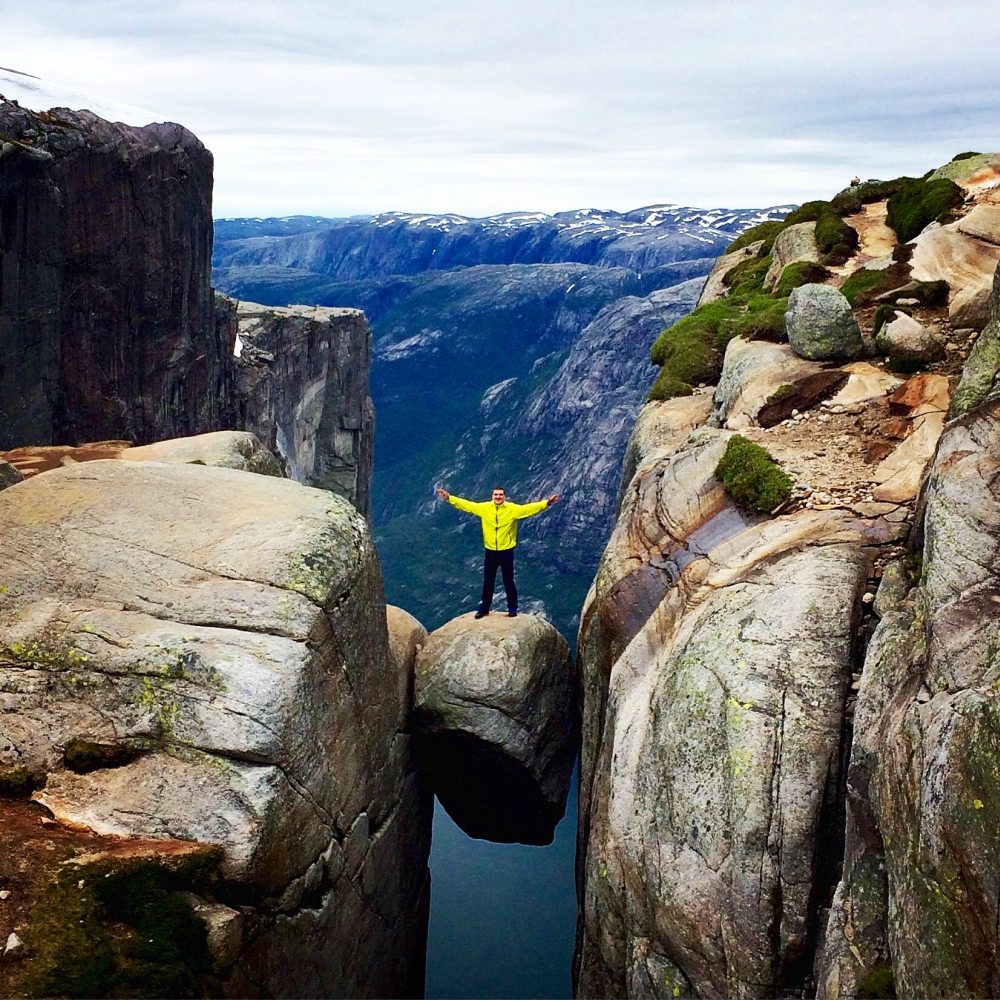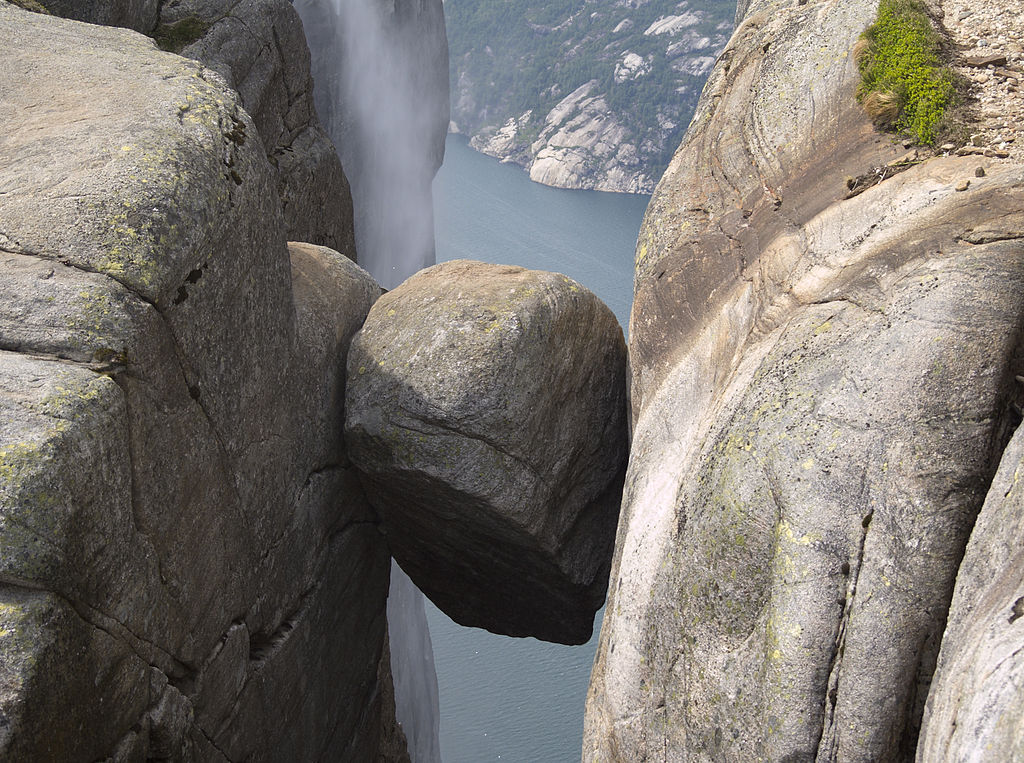Discover Kjeragbolten, Norway’s gravity-defying masterpiece by nature, where a boulder hangs precariously suspended between two cliffs, offering an adrenaline-pumping adventure like no other.
 Would you dare? Photo: dziambel
Would you dare? Photo: dziambel
If you are looking for an adrenaline-pumping adventure in Norway, you might want to visit Kjeragbolten, a giant boulder that is stuck between two cliffs over a 984-meter (3,228 feet) deep abyss.
Kjeragbolten is one of the most popular attractions in Norway, attracting thousands of tourists every year who want to take a photo on this death-defying rock. Here’s everything you need to know about Kjeragbolten, how to get there, and what to expect from this amazing hike.
 The Kjeragbolten boulder was wedged in the rock during the last ice age. Photo: Oiiisann
The Kjeragbolten boulder was wedged in the rock during the last ice age. Photo: Oiiisann
Kjeragbolten is a 5-cubic-meter (180 cubic feet) glacial deposit that was wedged in a large crevice in the Kjerag mountain plateau during the last ice age, around 50,000 B.C. Throughout the numerous glaciation periods that took place in Scandinavia, Norway was entirely enveloped by glaciers. Between these glaciations, the valley underwent a process of shaping and reshaping by meltwater, occurring up to 22 times.
Following the last glacial period, global warming caused a rise in sea level, flooding the fjords. It was then that the giant boulder was deposited here.
Kjeragbolten is located near the northern peak of the plateau, which runs along the southern side of Lysefjorden, a 42-kilometer-long (26 miles) fjord in Rogaland county, Norway. The boulder is suspended above a sheer drop of almost 1,000 meters (3,280 feet), making it a thrilling spot for adventurous travelers.
 Lysefjord from the Kjerag mountain plateau. Photo: DarwIn
Lysefjord from the Kjerag mountain plateau. Photo: DarwIn
To get to Kjeragbolten, you need to hike about 10 kilometers (6.2 miles) round trip from the parking lot at Øygardstøl, also known as the Ørneredet (The Eagle’s Nest), a restaurant that offers stunning views over Lysebotn, the village at the end of Lysefjorden.
The hike is considered challenging, as it involves some steep ascents and descents, rocky terrain, and chains to help you climb some sections. The hike can take anywhere from 4 to 6 hours, depending on your fitness level and how long you spend at the boulder.
The best time to hike to Kjeragbolten is from June to September, when the weather is usually mild and dry, and the trail is free of snow and ice. However, you should always check the weather forecast before you go, as it can change quickly and make the hike more difficult or dangerous.
You should also wear proper hiking shoes and clothing, bring enough water and snacks, and follow the red T-markers along the trail.
 A daring man standing on Kjeragbolten. Photo: Scoundrelgeo
A daring man standing on Kjeragbolten. Photo: Scoundrelgeo
Once you reach Kjeragbolten, you will have to wait your turn to step on the boulder and take your photo. Depending on how busy it is, you might have to wait for a few minutes or over an hour.
There is usually a guide or a volunteer who helps people get on and off the boulder safely. You should listen to their instructions and be careful not to slip or fall.
Standing on Kjeragbolten is an exhilarating experience that will make your heart race and your palms sweat. You will feel like you are defying gravity and nature as you balance on this precarious rock above a dizzying drop.
 It’s definitely worth the effort – unless you are afraid of heights. Photo: Larita
It’s definitely worth the effort – unless you are afraid of heights. Photo: Larita
You will also enjoy breathtaking views of the surrounding mountains and fjord. It is definitely worth the effort and the wait.
However, if you are afraid of heights or not feeling confident enough, you can skip the boulder and still admire it from a safe distance. There are plenty of other viewpoints along the trail that offer spectacular scenery and photo opportunities.
You can also watch other people brave the boulder and cheer them on.

